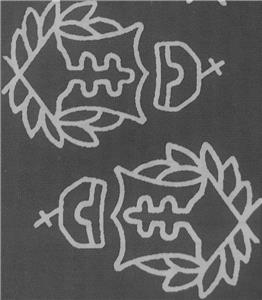Stamp: Red Cross (Hungary 1942)
Red Cross (Hungary 1942)
01 September (Hungary ) within release Red Cross I. goes into circulation Stamp Red Cross face value 12+50 Hungarian fillér
| Stamp Red Cross in catalogues | |
|---|---|
| Philatelia Hungarica Catalog: | PHu: HU 726V/B2 |
Stamp is vertical format.
Also in the issue Red Cross I.:
- Stamp - Red Cross face value 8+32;
- Stamp - Red Cross face value 8+32;
- Stamp - Red Cross face value 3+18;
- Stamp - Red Cross face value 3+18;
- Full Pane - Red Cross face value 10*(3+18);
- Full Pane - Red Cross face value 10*(3+18);
- Full Pane - Red Cross face value 10*(3+18);
- Full Pane - Red Cross face value 10*(8+32);
- Full Pane - Red Cross face value 10*(8+32);
- Full Pane - Red Cross face value 10*(8+32);
- Stamp - Red Cross face value 12+50;
- Stamp - Red Cross face value 12+50;
- Full Pane - Red Cross face value 10*(12+50);
- Full Pane - Red Cross face value 10*(12+50);
- Full Pane - Red Cross face value 10*(12+50);
- Stamp - Red Cross face value 0.20+1;
- Stamp - Red Cross face value 0.20+1;
- Full Pane - Red Cross face value 10*(0.20+1);
- Full Pane - Red Cross face value 10*(0.20+1);
- Full Pane - Red Cross face value 10*(0.20+1);
Stamp Red Cross it reflects the thematic directions:
The homing pigeon, also called the mail pigeon or messenger pigeon, is a variety of domestic pigeons (Columba livia domestica) derived from the wild rock dove, selectively bred for its ability to find its way home over extremely long distances. The rock dove has an innate homing ability, meaning that it will generally return to its nest using magnetoreception. Flights as long as 1,800 km (1,100 miles) have been recorded by birds in competitive pigeon racing. Their average flying speed over moderate 965 km (600 miles) distances is around 97 km/h (60 miles per hour) and speeds of up to 160 km/h (100 miles per hour) have been observed in top racers for short[clarification needed] distances.
Radio is the technology of communicating using radio waves. Radio waves are electromagnetic waves of frequency between 3 hertz (Hz) and 300 gigahertz (GHz). They are generated by an electronic device called a transmitter connected to an antenna which radiates oscillating electrical energy, often characterized as a wave. They can be received by other antennas connected to a radio receiver, this is the fundamental principle of radio communication. In addition to communication, radio is used for radar, radio navigation, remote control, remote sensing, and other applications.



